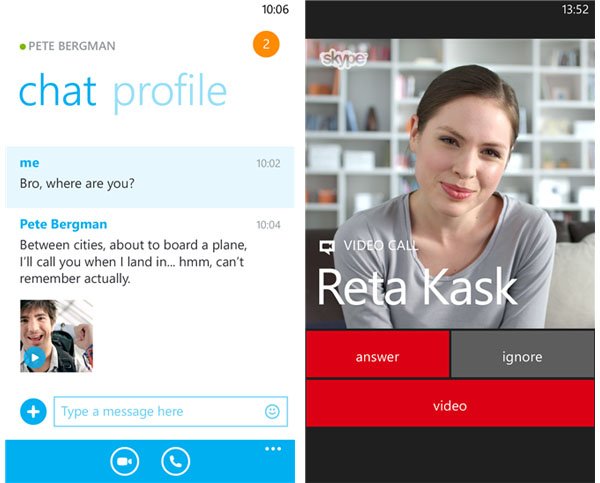
Microsoft has finally released a brand new version of Skype for both Windows phone 8 and 8.1. This latest release of Skype 2.19 is set to bring a fine selection of new features to the Windows Phone devices.
Skype 2.19 now complements the Cortana integration. This simply means that you can start Skype calls through Cortana, Microsoft’s voice triggered virtual assistant.
Below are some of the new features that come with this new Skype version:
Start Skype calls with Cortana
Currently existing on windows phone 8.1 in the US, Cortana, the new personal aide found on windows phone 8.1 helps to connect with your friends easier and faster. You are now able to start audio or video Skype calls by simply requesting Cortana; for instance “Skype, get John on the screen”.
Edit messages
Skype 2.19 comes with the ability to let you change the last message you sent. This is as a result of user feedback for the previous versions.
Improved notifications and fast application resume
The performance of the push notifications has been greatly improved. Now, you can be able to get back into your urgent conversations swiftly. Moreover, Skype 2.19 also includes fresh features and enhancements including the ability to see your notification in the action center together with enhanced notifications.
In addition, Microsoft has correspondingly added a supplementary language support in the newest VoIP software version. Previously, there were only a total of 19 supported languages. At present, the number has risen to a remarkable 51.
The new features will certainly help you Skype with ease and improve the effectiveness of your communication.


 Imo
Imo Several other high-end
Several other high-end  Logitech
Logitech It seems as if 2012 will go down as a turning point in the rise of VoIP. According to a recent report by industry analyst
It seems as if 2012 will go down as a turning point in the rise of VoIP. According to a recent report by industry analyst  Recent media reports have accused
Recent media reports have accused 
 Computing giant
Computing giant